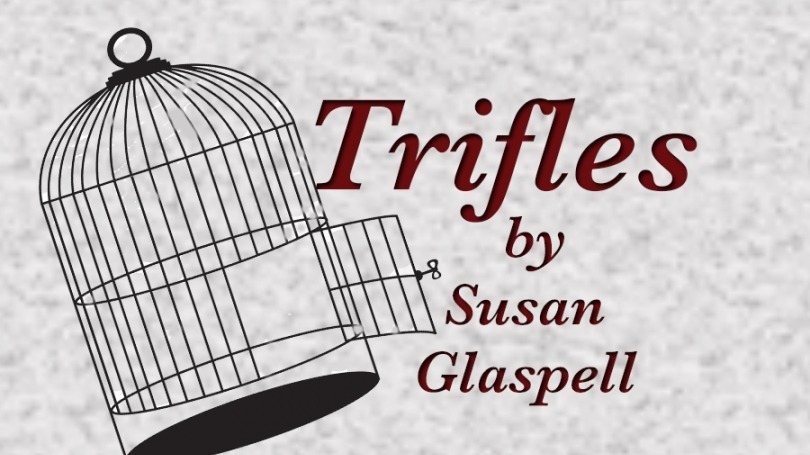Literary Analysis: Continued Cold

The power of warmth is undeniable. The ability to change the mood, the feeling, the setting by simply spreading warmth in a cold room is unmatched. The connotations associated with warmth are often comfort, homeliness, and hope. In contrast, cold is often associated with feelings of emptiness, absence, and loneliness. “Trifles,” a modernist piece by Susan Glaspell, reflects on the impact warmth and cold can have on a setting. Glaspell’s repetition of asserting the cold in the setting plays on connotations and suggests information about characters based on who feels the cold in certain circumstances of the story.
Within the play, a mention of the temperature or a reaction to the temperature occurs eight times. Four out of the five characters make mention of or react to the coldness of the setting. The County Attorney speaks of it only once at the beginning of the story, and more indirectly but in the context of using the fire for warmth (751). Mrs. Peters has the most comments about the cold throughout the story by mentioning it four of the eight times (752; 754; 755). The Sheriff makes one comment while Mr. Hale makes two (752; 760). The only character to never comment about the cold is Mrs. Hale.
The irony of Mrs. Peter's lines about the temperature of the setting are initially contradictory. She mentions at the beginning that she isn’t cold, but also reacts to the setting by stepping closer to the fire (751). However, she mentions the cold of another room in the house in the middle of the story (753). Another odd moment of contradiction is when Mr. Hale finds Mrs. Wright sitting in the house and asks if she realizes it is cold, but she responds with an off-handed comment about not noticing the chill (753).
The multitude of connotations that are associated with “cold” reflect suggestions about the setting and suggestions about the characters themselves. When determining what cold suggests, ideas that are prompted include absence, loneliness, loss, sterility, and lack of homeliness. All of these themes are present in the story of Minnie Foster, also referenced to as Mrs. Wright. The repetition of describing the freezing setting compounds the parallels between the frigid feeling of the rooms and the possible themes of the story. Throughout the dialogues, Mrs. Hale mentions the loss of the old Minnie Foster, the person she was before she was married (756; 758). The absence of warmth in the rooms reflects the possible absence of love in the Wright’s marriage itself. This is implied even further when Mrs. Hale describes John Wright: “But he was a hard man, Mrs. Peters. Just to pass the time of day with him--[shivers] Like a raw wind that gets to the bone” (758). Even the description of John Wright’s company as a bone-chilling wind further expresses the coldness in his marriage to Minnie. The Wright’s lack of children may also be reflected in the description of cold with the connotation of being sterile. Furthermore, the lack of children also connects to the concept of warmth in a home. The two women describe Minnie’s housekeeping and tending to the home as mediocre at best. The combination of no children and remedial focus on building a home both reflect the cold emptiness described in the setting.
The men’s reactions to the cold are also different than the women’s reactions to the cold. The men tend to take action to mend the discomfort of the cold. For example, the County Attorney utilizes the fire from the beginning and Mr. Hale prompts the discussion of the cold to Mrs. Wright with the implication of fixing it (752; 753). The sheriff even goes so far as to talking about the fire being made to prevent those present from catching pneumonia, whereas Mr. Hale takes action against it by bringing around the team of horses (752; 760). On the other hand, Mrs. Peters makes comments about the effects of the cold, particularly on Minnie’s fruit preserves (754). The irony and parallel of how the two groups react to the cold reflects how they react to the murder case. The men take action to remedy the cold, and in turn, they are actively working to find evidence for the case. However, the women seem to take a wider view of the murder case by looking at the cause and effect. The cause of the cold results in Minnie’s preserves being ruined, just as the John’s killing the canary results in Minnie’s murdering.
Throughout “Trifles”, Glaspell uses the continuous mention of cold and the chilly setting to suggest bigger themes about the story. The connotations of cold in relation to reactions to the setting indicate wider views of gender roles in her contemporary society. The expectations of women in a home and in certain affairs--such as law--are outlined through the suggested themes, leading the reader to think deeper about how “cold” portrays characters and their roles.
Photo credit: https://www.google.com/url?sa=...
